Investing in prevention and early action are always the most cost-effective and damage mitigating approach to invasive species and our national biosecurity system is fundamental to this.
We believe there are 4 key problems which are undermining our current biosecurity system and threatening Australia’s unique wildlife, bushland and waterways. They are:
- The adequacy of funding – the system is desperately under resourced
- The sustainability of funding – We need clear, long term solutions to ensure risk creators pay
for the system - What the money is spent on – environmental biosecurity is under prioritised, compared to
industry biosecurity - The culture of the department – while there are many good people, the overall culture is
focussed on protecting Australia’s export access and threats to the agricultural industry, with
environmental threats seen as a minor concern.
In addition there are 5 key areas that need strengthening to prevent the next environmentally destructive invader, better understand the risks posed, and be better equipped to deal with outbreaks:
- Increase the capacity and capability of the Environmental Biosecurity Office, and at least
triple the Environmental Biosecurity Project Fund. - Establish an independent body to coordinate environmental biosecurity response,
preparedness and engagement, like Plant Health Australia. - Improve surveillance for high-risk potential invaders.
- Improve the coordination of responses to established invaders.
- Strengthen research, development and extension (RD&E) for invasive species.
Recommendations:
Adequate and ongoing funding to support biosecurity
- The current level of funding, even with the efforts by the Department of Agriculture,
Fisheries and Forestry (DAFF) presented in these legislative amendments, is not sufficient to
prevent new incursions, respond to incursions when they occur or successfully eradicate high
risk invasive species. - Undertake a comprehensive assessment of the full cost of preventing new high risk
environmental incursions, responding to those incursions and eradication of high risk
invasives. This assessment will then inform the scale and design of adequate and ongoing
funding required. - Investigate new and alternative funding models that can adequately and sustainably fund
environmental biosecurity, applying the principles of equity and efficiency. For example, a
biosecurity risk insurance incentive-based mechanism.
a. To explore the technical application and details of biosecurity risk insurance, the
committee should call upon the Centre of Market Design and Centre for Excellence in
Biosecurity Risk Assessment (CEBRA) at this inquiry.
b. Consult with the industries that would be part of a broader roll out of these
mechanisms, such as the Freight Trade Alliance, who may be very willing to take on
this model. - Consider the application of an environmental protection levy on high risk trades, directing
funds to environmental biosecurity activities and outcomes.
Support world-leading and well resourced environmental biosecurity to prevent new invaders and mitigate impacts of invasive species. The following is a list of priority reforms.
- Increase funding dedicated to environmental biosecurity functions by at least $62 million
over four years. - Increase funding for the Environmental Biosecurity Project Fund to $2.5 million per year
(up from only $825,000 per year since 2017). COST: $10 million over 4 years. - Strengthen and elevate the office of the Chief Environmental Biosecurity Officer (CEBO), by:
a) Making it an independent, statutory role appointed by the Minister for a fixed 5
year term, to avoid the role being removed, downgraded or undermined in future.
b) Appointing the CEBO at the equivalent seniority of the Chief Plant Protection
Officer and Chief Veterinary Officer (First Assistant Secretary).
c) Establishing the Environmental Biosecurity Office (EBO) as a separate office
reporting to the CEBO within the Biosecurity section of the department by January
2025.
d) Ensuring there are at least 20 permanent FTEs reporting to the CEBO and fully
focussed on environmental biosecurity functions, not serving other departmental
priorities.
e) Including the budget for the EBO as a separate line item in the federal budget. - Commit to review and revise the National Priority List of Exotic Environmental Pests (EEPL) in 2024, and to have completed by 2027 new response plans and pathway action plans for at least 30 species or species groups assessed as high environmental risk.
- Create 6 new national invasive species coordinator positions to complement existing feral
deer, pig and cat/fox positions ($400,000 each/year) focussed on (1) invasive grasses in
northern Australia, (2) community surveillance, (3) invasive insects, (4) freshwater
invasives, (5) invasive cacti, and (6) myrtle rust and exotic plant diseases. COST: $7.2 million
over 3 yrs. - Develop and implement a national offshore islands and mainland havens invasives strategy
COST: $1.5million over 3 years. - Commission a detailed risks and pathways analysis for invasive fungi. COST: $250,000.
- Establish Environment Health Australia as an independent, non-government body, similar
to Plant/Animal Health Australia, that would:
a) Coordinate environment biosecurity responses with states and territories.
b) Host the National Environmental Biosecurity Response Agreement (NEBRA).
c) Drive research, development and extension for environmental biosecurity and
invasives.
COST: $10 million in seed funding over 3 years.
- Invest $69.8 million over 4 years in high priority environmental research and innovation,
including
a) implementation of the National Environment and Community Biosecurity Research,
Development and Extension Strategy (NECBRDES)
b) development of more-effective and human control methods for invasive vertebrate
animals
c) assessment of fungi and other pathogen risks for Australian native plants
d) biocontrol programs for nationally significant invasive plants and animals (where
feasible
e) maintenance and expansion of validated reference collections for biosecurity risk groups in Australia’s national biological collections
f) Invest in rapid identification research for environmental pests and diseases, and rejuvenate Australia’s ageing reference collections
g) expand the Environmental Biosecurity Project Fund from a mere $850,000 to $8 million over four years – kept within the EBO in DAFF.
- Allocate $0.4 million for a Research, Development and Extension coordinator role (salary at EL2 level plus travel and event expenses)
- As part of the ‘making biosecurity sustainable initiative’, Investigate funding across the entire biosecurity spectrum, including the functions administered by state/territory governments, not just DAFF activities at the border.









